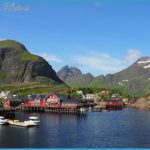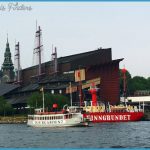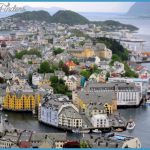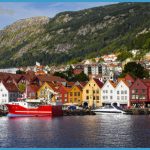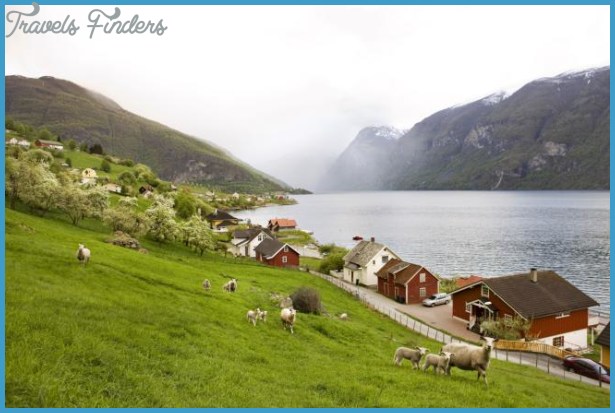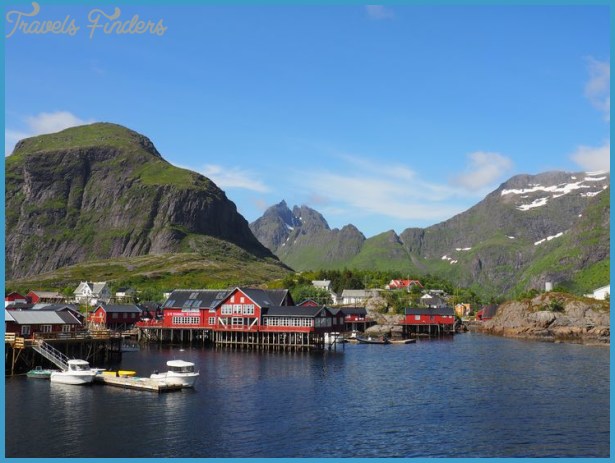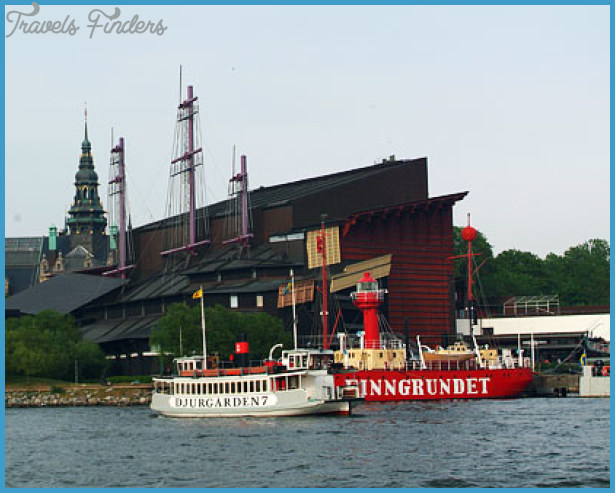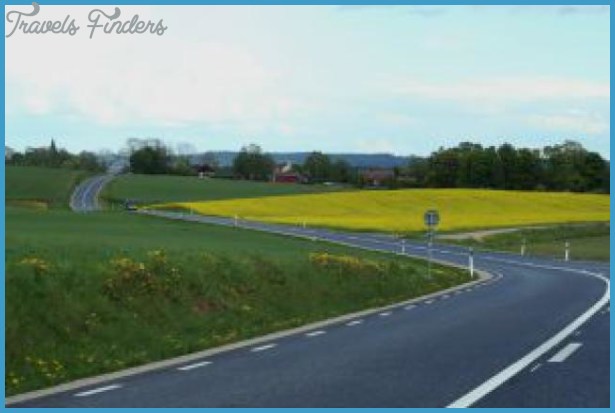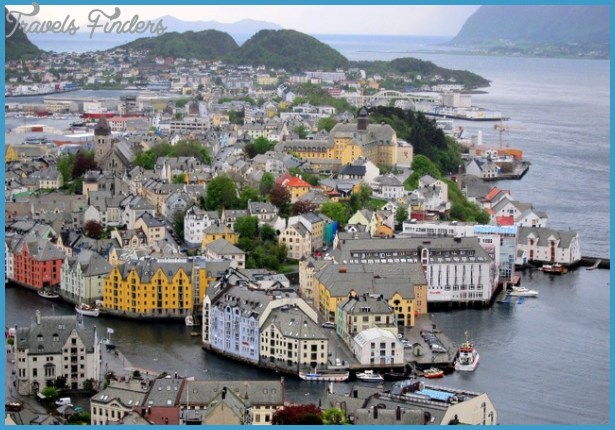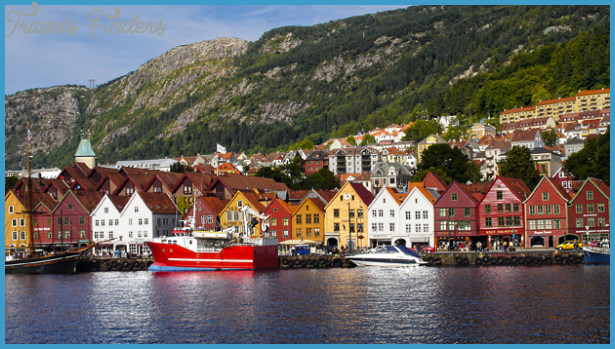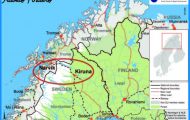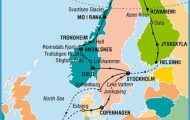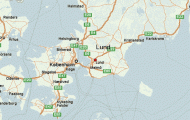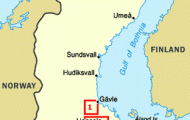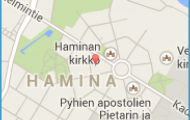The inter-Scandinavian network of air services extends throughout the four countries, reaching as far north as Kirkenes, so that all major towns are readily accessible by air. Air fares are particularly reasonable in Finland, which offers Finn-air holiday tickets covering an unlimited number of flights within Finland at a cost of 180 US dollars for 1 5 days.
Except in Denmark and southern Sweden, the Scandinavian railway network is relatively sparse, but it is so well complemented by bus and boat services that all parts of the four countries are easily accessible.
Denmark has some 2600 km (1600 miles) of railway lines, some 2000 (1250) of which are run by the Danish State Railways (Danske Statsbaner, DSB), which also run 210 km (130 miles) of ferry services. The only electrified line is the Copenhagen S-Bane.
Norway’s railway system (4500 km 2800 miles) is almost exclusively run by the Norwegian State Railways (Norges Statesbaner, NSB). The main lines in the south of the country are electrified. Some important main lines have been completed only in recent years, including the Sorland line from Oslo to Stavanger (1943), with the two longest tunnels in the country (8474 m (9270 yds) and 9064 m 9900 yds), and the Nordland line from Trondheim to Bodo (1 960).
The Bergen line, through the mountainous country of southern Norway, was built between 1895 and 1 909 to provide a link between the two largest towns in Norway, Oslo and Bergen. Of its total length of 492 km (306 miles), about 100 km (60 miles) are above the tree-line. The highest point is at the Taugevann (1301 m 4270 ft). Motorail between Oslo and Bod0.


